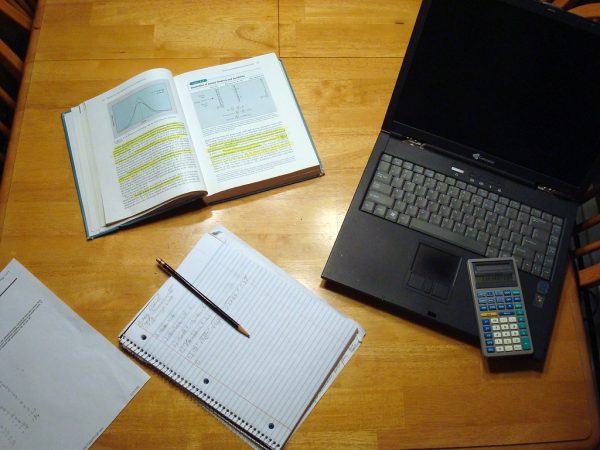Teens and Screens
“The phone is the 21st century’s greatest distraction.” French teacher, Heather Wacha, says. Most teens have a dependence on technology, specifically their phones.
“If we are sitting in a position where we feel uncomfortable, bored, or awkward, going to the phone seems to be an easy way to resolve it,” Wacha says. Our phones are right there, always on us, counting down the time until our next notification hits and we pick it up. For most teens, their phone is their lifeline. “[Gen Z] is more geared toward their phones,” Sou Sanogo ‘23 says. Social media and the internet are what keep us connected to each other. No matter where you are you can get in touch with anyone. Some teens take this to the extreme with the amount of time they spend on their phones, “it’s very much along the lines of an addiction.” Wacha says.
6 hours, 4 hours, 10 hours. What do you think your screen time is? The average screen time for a person is 7 hours and 4 minutes a day. The Average teen spends 7 hours and 22 minutes daily on their phones. Compared to Doctors who recommend that a person should have no more than 2 hours of screen time a day, excluding homework or work. Do you think you could follow the recommended 2 hours? After talking to the students at West it seems that teens have a hard time staying under it.
Today, people use different social media platforms for different purposes. Instagram for seeing what your friends are up to, TikTok for entertainment, and Snapchat for communication. Biology and AP Environmental Science teacher, Brad Wymer, say social media and the internet help people stay more connected with each other. “There are people that I hadn’t been in touch with for 10 to 20 years. With Instagram and Facebook, we’ve reconnected and even gotten together a few times and probably wouldn’t have if it weren’t for [social media].” Most teens rely on social media, they want “that constant, immediate, sort of response,” Wacha says.
“There are people that I hadn’t been in touch with for 10 to 20 years. With Instagram and Facebook, we’ve reconnected and even gotten together a few times”
— Brad Wymer, AP Environmental Science and Biology teacher
Phones have made communication easier, they also are used as a tool in the classroom. Wacha says when most students have their phones out in her class it’s because they are using their phones for material and class work. “I think [phones] are a great tool.” But they can also be “A distraction in the classroom; in the learning environment.”
Buzz. A notification has alerted you. You feel that immediate force pulling you to check your phone. Most of us know this feeling. Our phones pull us away from whatever we are doing. This is especially a problem in school. In classes, people are on their phones instead of paying attention senior Ava Rhoades says. Not just in the learning environment but also when you’re trying to get work done phones affect your ability to be productive. “I’m on TikTok instead of doing work.” Sophia Olivo ‘25 says. “In a way, [phones] can help and in a way they can’t,” Sanogo says. Phones being a distraction is not just a problem teens face, adults face it too. “They’re a distraction for me a little bit during times that I end up socializing and I should be getting some work,” Wymer says.
“Phones are a distraction from the real world.”
— Dr. Heather Wacha, French Teacher
Phones distract us in school but also can be used as a tool. For most people, social media and the internet are their main sources of communication. Being on our phones all the time cause our screen time to go up and makes us build a dependence on our phone.
Your donation will support the student journalists of West High School. Your contribution will allow us to purchase Scholarship Yearbooks, newsroom equipment and cover our annual website hosting costs.

(she/her) Charlotte is a sophomore at West High and this is her first year on staff. She is Co-Student-Life-Editor of the Yearbook. In her free time you...

(she/her) Annie is a junior at West High and this is her first year on yearbook staff. In her free time she enjoys running cross country and hanging out...

(she/her) Emily Rabe is a sophomore and this is her first year on staff. She is the Co-Student Life Editor on Trojan Epic. In her free time you can find...









